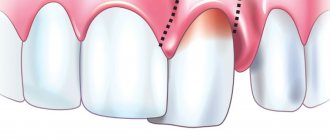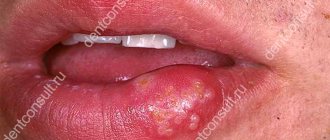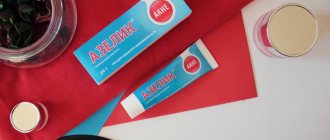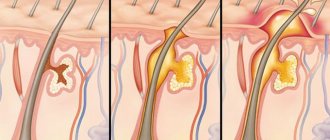A furuncle is an inflammatory process that affects the hair follicles and surrounding tissues, characterized by a purulent-necrotic reaction and intoxication of the entire body. The main pathogens are ingested pyogenic bacteria, mainly Staphylococcus aureus. The main reasons for the occurrence of such a pathology can be: microscopic injuries to the skin (from shaving, depilation, ingrown hairs, dry skin, scratching, etc.), disruption of the metabolic response and immune defense of the surface layers, skin contamination and blockage of the ducts of the glands located next to the follicle , impaired sweating and sebum secretion, hypo- and avitaminosis, endocrine disorders.
A boil, as a skin disease, is characterized by a staged process:
- Development of infiltrate within 1-2 days (hyperemia of the skin, thickening, the skin stretches and becomes flattened, shiny over the area of formation of the pathological process, extremely painful);
- On the 3-4th day, suppuration of the follicular pustule occurs, with a necrotic center;
- Rejection of the necrotic core of the boil;
- The healing process with scarring lasts up to 10 days.
In addition to a local reaction, a boil is characterized by intoxication of the body. Often there is a temperature reaction to the infectious agent and pus, as well as general weakness.
A boil can be treated either conservatively or surgically. In the first stages, local anti-inflammatory drugs and antiseptics may be prescribed. The skin at the site of hyperemia is thoroughly cleaned (disinfected with iodine or alcohol solution), applications with ichthyol ointment are applied, dry heat and UHF are applied. After opening the boil during the process of discharge of purulent-necrotic masses, a wet-dry bandage and applications with a hypertonic solution are applied, this promotes better discharge of pus. After complete cleansing of the ulcer, antibacterial ointments are applied to the wound; levomekol is excellent. When the process is localized to the face, severe complications (purulent meningitis or sepsis) may occur, so systemic antibacterial drugs must be prescribed. In general terms, the medical impact for this pathology is the same for any location, although there are minor differences in the clinic and treatment methods. The surgical method is used when it is impossible to remove the purulent-necrotic rod on its own.
Furuncle in the ear
A boil in the ear receives therapeutic treatment with minor differences. The opening and rejection of necrotic masses may be accompanied by their flow into the middle ear, which is very unfavorable and dangerous for the hearing organ, therefore the use of dry heat, which can also contribute to the occurrence of sepsis, is not recommended. It is recommended that the patient sleep on the affected side to prevent swelling. Be sure to contact an otolaryngologist. The specialist manages the patient conservatively throughout the entire period and only if necessary can perform minor surgery. Under no circumstances should you attempt to clean your ears at this time, squeeze out the boil, or carry out any other activities. The vascular network on the head is very well developed, so in this location it is necessary to approach treatment methods very carefully so as not to cause life-threatening complications. In addition to the local reaction, severe headache, loss of appetite, fever, and irritability often occur. When such a clinic develops, symptomatic additional treatment is prescribed: antipyretic, anti-inflammatory, analgesics.
Furuncle on the back
If you find a boil on your back, you should consult a doctor. This pathology can manifest itself either in a local clinic or in intense muscle pain. In case of complications and development of phlegmon (spread abscess), surgical intervention is necessary. The doctor carefully opens the cavity, cleans it of necrotic masses, and bluntly breaks off adhesions if they are present. The lesion is drained and a bandage with a hypertonic solution is applied (for better drainage of pus). A boil on the back is treated with local and systemic antibacterial therapy. If there is a fever and general weakness, antipyretic drugs are prescribed. Muscle pain is relieved with local and systemic analgesics. You should not try to remove a back boil yourself, comb it, or rip it off. Such actions can only lead to aggravation of the pathological process and the development of complications. Often with such localization there are not single, but multiple boils. A formation containing several necrotic rods is called a carbuncle. In case of multiple position of hair follicles, immunotherapy is recommended, and vitamin B complexes are also prescribed.
Causes of boils
The cause of the boil is a bacterial infection. Most often - Staphylococcus aureus. Bacteria enter the hair follicle, causing inflammation. The penetration of infection is facilitated by the presence of skin lesions, including:
- scuffs, scratches, abrasions. In men, the formation of boils on the face may be preceded by cuts when shaving;
- scratching for dermatological diseases;
- violation of the protective properties of the skin during prolonged contact with liquid. Therefore, increased sweating is a factor that increases the risk of developing a boil. Also, boils can occur inside the ear canal or in the nose, and the provoking factor is prolonged exposure to the skin of mucous or purulent secretions due to diseases, respectively, otitis (inflammation of the ear) or rhinitis (inflammation of the nasal mucosa);
- constant contamination of the skin, including those associated with professional activities (when the skin comes into contact with lubricating oils, cement, coal or lime dust, etc.).
Under normal conditions, the body's defense system prevents the development of inflammation. However, if the immune system is weakened, the risk of developing boils increases. In the case of multiple boils (furunculosis), the factor of decreased immunity is almost always present. The formation of boils is promoted by:
- chronic infectious diseases (tuberculosis, hepatitis, sinusitis, tonsillitis, bronchitis, pyelonephritis);
- HIV;
- hypothermia or, conversely, overheating. Hypothermia often becomes a factor provoking the formation of boils in adolescents;
- improper nutrition (depletion of the body, hypovitaminosis);
- diseases manifested in the form of metabolic pathologies (diabetes mellitus, endocrine disorders);
- treatment with drugs that suppress the immune system (used in the treatment of cancer and in some other cases);
- chronic fatigue;
- stress.
Furuncle under armpit
When the boil is localized in the armpit, movements of the upper limb are significantly hampered due to the sharp pain of the formation. It is difficult to adduct or abduct the arm. This condition worsens the patient’s life and makes it impossible to perform usual actions. A developed vascular network can contribute to the spread of infection throughout the body. Regional lymph nodes often become inflamed in response to local inflammation, making movement even more difficult. Fever is typical. A boil under the armpit is treated mainly conservatively. During the period of illness, shaving the armpit and using deodorants are prohibited. It is recommended to thoroughly wash the skin and disinfect the skin with alcohol or iodine solution. In general, conservative measures are carried out, as with boils of other locations. After opening the formation, applications with saline solution and antibacterial ointments are applied. Antibiotics and, if necessary, non-steroidal anti-inflammatory drugs are prescribed. With proper conservative treatment and avoidance of trauma to the pathological focus, surgical treatment is extremely rarely resorted to.
Furuncle on the leg
A boil on the leg or buttock often causes trouble when walking or sitting. Sometimes pain and inflammation significantly complicate the movement of the patient, who tries to spare the affected leg. Boils of the buttock are often complicated by the formation of phlegmon. This often leads to the formation of extensive necrosis, resulting in a scarring process. For this reason, a boil on the buttock is most often treated surgically with opening and drainage of the abscess. With this localization, the patient is recommended to spare the affected area, try to sit on the healthy side, and thoroughly disinfect the site of the pathological process. After rejection of the boil core, bandages with antibacterial ointments should be constantly changed to prevent infection of surrounding tissues with the formation of purulent streaks. After the formation of such ulcers, scars are formed that have an extremely negative cosmetic effect. A boil on the leg is treated conservatively, similar to that for other locations. In case of complications, minor operations are used to open the abscesses. In addition to local treatment, systemic antibacterial drugs are prescribed. With a single boil on the leg and careful handling of it, and with a favorable course of the disease, you can carry out conservative measures yourself. If the boil on the leg does not go away for a long time (more than two weeks) or is complicated by the appearance of a temperature reaction, then you should definitely consult a doctor.
Nasal boil
Nasal boil is an acute purulent inflammation of the hair follicle and sebaceous gland on the outer or inner surface of the wing of the nose, the tip of the nose, and the skin of the nasal septum. Boils are most often located on the tip and wings of the nose, in the vestibule, near the nasal septum.
Nasal furuncle is one of the manifestations of staphylococcal pyodermatitis, which include ostiofolliculitis, sycosis, deep folliculitis, hidradenitis, multiple abscesses in children, and pemphigus in newborns.
Staphylococci play a leading role in the occurrence of nasal boils. The etiological role of Staphylococcus aureus is associated with the high prevalence of carriage of this microbe - the proportion of people with St. aureus is constantly found on the skin of the wings of the nose and some other parts of the body (armpits, groin area) reaching 40%.
Causes of a boil in the nose
— Infection through dirty hands, hygiene and care products, dirty water — The presence of chronic foci of infection, which are accompanied by periodic discharge of mucus and pus from the nose in the vestibule of the nose (rhinitis, sinusitis, adenoiditis). This creates conditions for infection to penetrate into the hair follicle of the vestibule of the nose. — Decreased immunity — Increased blood sugar levels (diabetes mellitus)
Symptoms of a nasal boil
The boil is most often located on the tip and wings of the nose, in the vestibule of the nasal cavity, on the skin part of the nasal septum. In most cases, there is a gradual development of the inflammatory process, which is initially localized at the mouth of the hair follicle and then spreads deeper. Within 1-2 days, a thickening, hyperemia, swelling of the skin is formed here, pain appears, which intensifies with tension in the facial muscles, chewing, and examination of the nose (during anterior rhinoscopy). These changes are accompanied by headache, weakness, and increased body temperature. In peripheral blood, as a rule, a shift in the leukocyte formula to the left and an increase in ESR are observed.
Treatment
Under no circumstances should you treat a boil yourself, and especially not “squeeze” it. A feature of the venous blood supply to the face is that blood flows through the veins into the cranial cavity, so an infection that enters the blood from the facial skin tissues can travel through the veins to the brain tissue. “Squeezing” the abscess promotes the spread of infection. In addition, when entering the venous bed, the infection can cause an inflammatory process in the tissues of the veins - local thrombophlebitis of the superficial veins of the face, which in turn can lead to a very serious complication: thrombosis of the cerebral cavernous sinus. This complication often leads to death. Bed rest, parenteral antibiotics (intramuscular or intravenous), antihistamines, vitamins, and autohemotherapy are prescribed. The skin is treated with boric or salicylic alcohol, and bandages with antibacterial ointments are also used - 10% syntomycin emulsion, 2% furacillin ointment, Vishnevsky ointment, ichthyol ointment. Physiotherapeutic procedures are also used - quartz and UHF therapy. Incisions of boils can be made when an abscess has formed, as well as after their independent breakthrough. The boil is opened under local anesthesia. To ensure the drainage of pus, a small rubber band is inserted into the wound. A bandage is applied with hypertonic sodium chloride solution and an antiseptic. For a boil in the nose, antibiotic therapy and blood thinners must be included in the treatment.
Furuncle during pregnancy
Treatment for boils during pregnancy is the most gentle. Everything is carried out within the framework of conservative therapy; if possible, it is recommended to use only local antibacterial agents. Any pathological process, as well as excessive use of medications, can significantly disrupt the development of the fetus. Systemic antibacterial drugs are prescribed only in extremely severe cases: multiple furunculosis, often recurrent, severe condition of the mother (fever, diffuse cellulitis, sepsis). In extremely severe cases, there may be a question of termination of pregnancy and appropriate therapy. To prevent such life-threatening conditions from arising, you should not touch the developing boil or try to cut or squeeze it out yourself. During pregnancy, if a woman experiences even a single boil, it is imperative to consult a doctor for advice and periodic monitoring of the development of the pathological process. A pregnant woman must follow a diet. If a boil occurs, it is worth reducing the proportion of carbohydrates. B vitamins have a beneficial effect on the skin and its immune processes. Complex vitamin complexes are prescribed. Biological food additives with vitamins, yeast. The diet should be varied, balanced and regular. Walking in the fresh air and doing gymnastics are very useful for stimulating the immune system.
Treatment of a boil of any location is aimed at preventing the development of complications. With a favorable course of the process, the necrotic core is independently rejected and a small ulcer is formed at the site of the boil, which often heals without leaving a trace.
Symptoms of a boil
A boil can form anywhere there are hair follicles (that is, almost anywhere except the palms and soles). Most often, a boil occurs where the skin sweats, rubs and gets dirty the most - on the neck, forearms, in the armpit or groin area, on the lower back, hips and buttocks. Often boils appear on the face.
In its development, the boil goes through several stages:
Formation of a boil
At the first stage, an infiltrate appears around the mouth of the hair follicle - a swollen area with pronounced redness and thickening of the skin. The infiltrate gradually increases and can reach a diameter of 1 to 3 cm. The skin around the infiltrate becomes tense and also becomes painful, and sometimes a tingling sensation is felt. In this case, people say “a boil is brewing.”
Purulent-necrotic stage
The next stage is called purulent-necrotic. On average, 3-4 days after the first signs of boil formation appear, a characteristic rod appears, consisting of pus and dead tissue, the end of which rises above the surface of the skin in the form of an abscess-pustule. If the boil is located on the face, in the ear, or on the neck, during this period there may be an increase in temperature to 38 ° C, general weakness, loss of appetite, and headache.
Boil breakthrough and healing
At some point, the pustule breaks through and the necrotic core comes out. Unpleasant symptoms disappear and healing begins. Within 3-4 days, the wound at the site of the boil heals. A scar is formed, which over time can become almost invisible.










